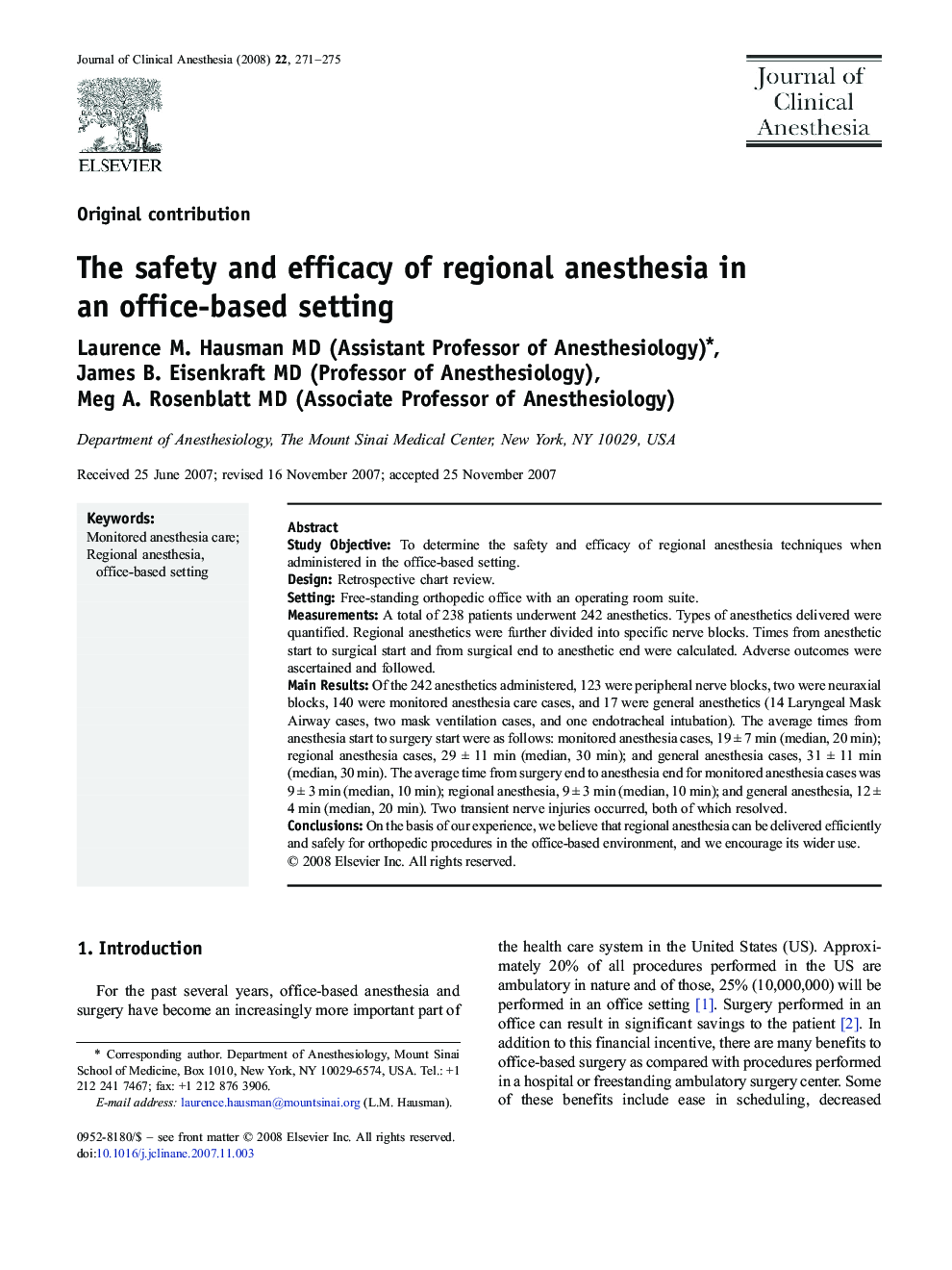| Article ID | Journal | Published Year | Pages | File Type |
|---|---|---|---|---|
| 2763499 | Journal of Clinical Anesthesia | 2008 | 5 Pages |
Study ObjectiveTo determine the safety and efficacy of regional anesthesia techniques when administered in the office-based setting.DesignRetrospective chart review.SettingFree-standing orthopedic office with an operating room suite.MeasurementsA total of 238 patients underwent 242 anesthetics. Types of anesthetics delivered were quantified. Regional anesthetics were further divided into specific nerve blocks. Times from anesthetic start to surgical start and from surgical end to anesthetic end were calculated. Adverse outcomes were ascertained and followed.Main ResultsOf the 242 anesthetics administered, 123 were peripheral nerve blocks, two were neuraxial blocks, 140 were monitored anesthesia care cases, and 17 were general anesthetics (14 Laryngeal Mask Airway cases, two mask ventilation cases, and one endotracheal intubation). The average times from anesthesia start to surgery start were as follows: monitored anesthesia cases, 19 ± 7 min (median, 20 min); regional anesthesia cases, 29 ± 11 min (median, 30 min); and general anesthesia cases, 31 ± 11 min (median, 30 min). The average time from surgery end to anesthesia end for monitored anesthesia cases was 9 ± 3 min (median, 10 min); regional anesthesia, 9 ± 3 min (median, 10 min); and general anesthesia, 12 ± 4 min (median, 20 min). Two transient nerve injuries occurred, both of which resolved.ConclusionsOn the basis of our experience, we believe that regional anesthesia can be delivered efficiently and safely for orthopedic procedures in the office-based environment, and we encourage its wider use.
